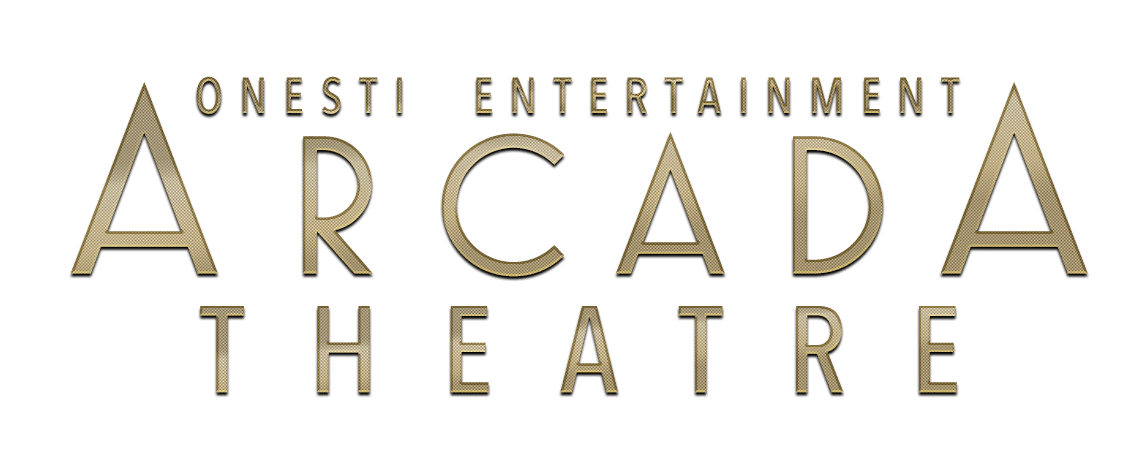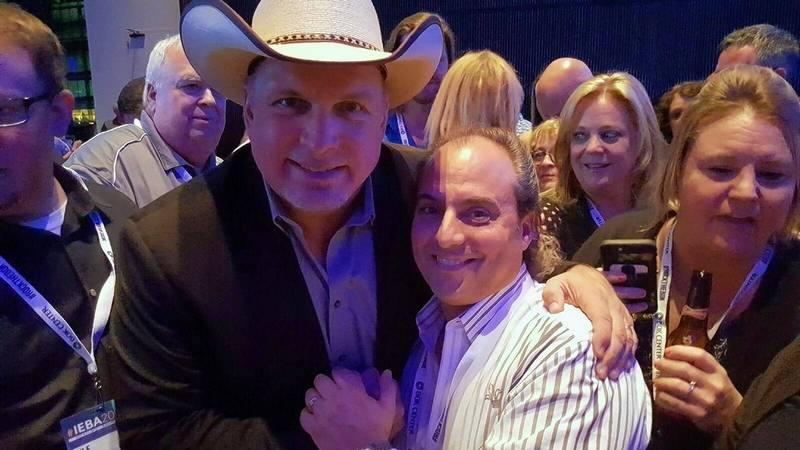Backstage with Ron Onesti:
Where would Country Music be… without Chicago?
A couple times a year, I fly down to Nashville, Tennessee, to attend some talent buyer meetings. I just love walking down its main street, Broadway, where there are numerous vintage guitar and vinyl record shops, studded clothing shops and boot and hat stores.
It was a beautiful day so I ventured off toward the downtown entertainment district where the sounds of banjos and acoustic guitars filled the air. Every bar, “honky-tonk,” restaurant and street corner had somebody “playin’ a git-tar and singin’ ” with a bit of a twang. There was live music everywhere, and if you do what I do for a living, well, this must be what the Southern part of what heaven is like.
I proceeded down 4th Street and happened upon the “Holy Grail of Country Music,” the Ryman Auditorium. It is where the famous “Grand Ole Opry” radio show used to be, and the building suffered through a time of disrepair and neglect, almost becoming an extinct relic of musical history. Today, it is tourist attraction with an entire building added on for souvenirs and restrooms — but still relatively in its original state. Its walls ooze with tradition, and feels as if the souls of Minnie Pearl, Roy Acuff, Hank Williams and Johnny Cash occupy this great hall, still tapping their colorful leather boots on the original wooden floorboards of its grand ol’ stage.
The Ryman Auditorium was originally built as a house of worship and the largest gathering place in Nashville. It slowly became an entertainment venue, and through the years, it has hosted practically every country music superstar in history (among many other legendary stars). Much like Carnegie Hall in New York, it is one of the most respected and treasured buildings in the world.
I have produced shows with some of the biggest country music names on radio, including Toby Keith, Brad Paisley, Trace Adkins, Ronnie Milsap, Kenny Rogers, Wynonna Judd, Clint Black, Charlie Daniels and Billy Ray Cyrus, to name a few. These are legendary names, some a bit more “legendary” than others. As country music experienced its waning period of its own history, it was great to see it come back stronger than it ever was, in the early ’80s. Since then, it has been one of the biggest-selling genres of music out there.
Now, the next generation of country music phenoms are emerging from television shows like “American Idol,” and mainstream country radio continues to be a major force on the airwaves. Stars like Carrie Underwood, Luke Bryan, Scotty McCreery, Chris Stapleton and Zac Brown fill stadiums with their pop/rock/country mega-concerts. Even with all the excitement this new style of country music is creating, I still can’t help but think of the genre’s simple and soulful origins as I sit in the “pews” that hug the blessed stage of the Ryman Auditorium.
Walking the Ryman’s hallowed halls and onto the stage upon which legendary international icons too numerous to mention have performed upon, is truly a humbling experience. In this intimate shrine soaked with music memories of thousands of unforgettable and historic performances, it is almost overwhelming to realize how important this building really has been to music history.
In the 1880s, a preacher by the name of Sam Jones was speaking publicly about the evils of alcohol and gambling from a tent in downtown Nashville. His popularity rose to a point where a local industrialist whose principal business was riverboats (where drinking and gambling were prevalent) decided to visit the preacher to “convince” him to change his message. But as Capt. Thomas Ryman attended the service, he was overtaken with emotion and Jones’ ministry. So rather than try to shut him down, Ryman built him a grand facility where he could accommodate the large crowd of Jones’ followers.
The Union Gospel Tabernacle opened June 1, 1892. Twelve years later, Ryman passed away, and in tribute to his friend, Rev. Jones renamed the church the Ryman Auditorium, and the “Mother Church of Country Music” began its journey to where it is today.
So, as The Ryman gained turn-of-the-century popularity, the biggest names of the day came to Nashville and appeared there. The early years saw presentations by Helen Keller, Enrico Caruso, Will Rogers, Kathryn Hepburn, Helen Hayes, Charlie Chaplin and Harry Houdini, just to name a few.
Back in the Chicago of the Roaring Twenties, George D. Hay, a former Memphis newspaper reporter, started a very popular barn dance show on WLS-AM radio that began to catch fire around the country. Around the same time, the National Life and Accident Insurance Co. in Nashville built a radio station as a public service to the local community and with the hope that the new medium could advertise insurance policies. The station’s call letters, WSM, stood for the company’s motto: “We Shield Millions.” After going on the air, National Life hired Hay as WSM’s first program director.
At 8 p.m. on Nov. 28, 1925, Hay launched, along with championship fiddler “Uncle” Jimmy Thompson, what would become the “WSM Barn Dance” show. “Barn Dance” would air immediately after a one-hour live opera show. Hay would begin his on-air show by saying, “You have been listening to the Grand Opera, now it’s time to listen to the Grand Ole Opry,” playing off the Southern “twang” from where this music came. The show was renamed the “Grand Ole Opry” in 1927.
The popularity of the radio show led to throngs of fans wanting to attend the broadcasts. On June 5, 1943, the show moved to the Ryman, which redefined the auditorium’s focus. The concept took off like a rocket and has not waned since.
Hank Williams, Elvis, Patsy Cline (whose biggest hit “Crazy” was written by a young, up-and-coming songwriter by the name of Willie Nelson) … they all performed there. Even the mandolin, banjo, guitar, bass and fiddle makeup of what was to become bluegrass music was born on the Ryman stage in 1945.
In 1969, Johnny Cash (who met his future wife June Carter backstage at the Ryman) debuted his television show from Ryman Auditorium. Not only did he feature the top performers in country music, but he also showcased guests from all corners of the music world, including Bob Dylan, Eric Clapton, Stevie Wonder and the Who.
After floods and renovations, the Ryman Auditorium has been masterfully restored to its original splendor, still with that old-country charm. The seats are not individual chairs; they are the original pews from the 1800s’ tabernacle design. Even the original stained-glass windows remain as a testimonial to the building’s religious origin.
I am so fortunate to be in the industry that I am in. I get to rub elbows with some of the biggest names in showbiz. Just on this last trip to Nashville alone I had the opportunity to talk to the guy who has sold more albums and more tickets than any other individual in history, in any genre of music: Garth Brooks. His humility and grounded, down-home good nature is indicative of why this genre of music has exploded over the past few decades.
The Ryman has kicked-off and fostered so many iconic careers, and is arguably the single most important pillar of country music history. Being a proud Chicagoan, just knowing that country music had its “mainstream” beginnings in Chicago is just another source of pride for us from the Windy City. Even though Nashville remains as the epicenter of country music, I wonder where country music would be today had it not been for that little “Barn Dance” show on Chicago radio?
Chalk up another feather in the cap of Midwestern influence in music!
• Ron Onesti is president and CEO of The Onesti Entertainment Corp. and The Historic Arcada Theatre in St. Charles. Celebrity questions and comments? Email [email protected].

